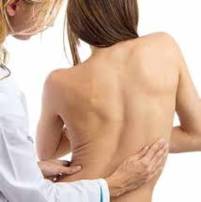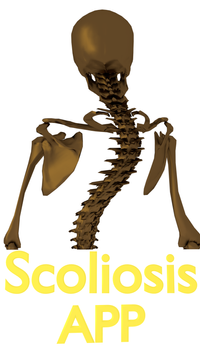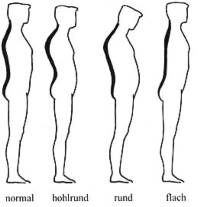Scoliosis-early detection
There are various causes of curvature of the spine. In general, they can be divided into two groups - TRUE SCOLIOSIS and FUNCTIONAL SCOLIOSIS.
TRUE SCOLIOSIS - new data on the occurrence and development and especially on the prevention of true scoliosis can be seen in the following video:
For early detection and tracking of the development of idiopathic scoliosis, you can download the mobile application here:
Instructions for using the Scoliosis Early Detection App can be found here.
In general, it can be assumed that scoliosis up to 20° is positively affected by the Atlas Correction and over time it is very likely to slow down its development or even completely correct it, provided that there are no other causes for it.
Generally speaking, there are 4 different positions of the spine, which are dependent on the position of the Atlas
1. Normal Position - The atlas is in an upright position.
2. The so-called Enhanced Lumbar Lordosis-Atlas is in a forward position compared to the normal
3. The so-called Rounded Back in the Thoracic Region of the spine-Atlas is also in the front position.
4. The so-called Straight or flattened Back-Atlas is in a back position.
Functional scoliosis
The head weighs between 4 and 6 kilograms. When the head is not located completely straight on the spine, an UNSYMMETRICAL load on the spine is reached. In order to keep the head upright and the eyes to look at the horizon
it is necessary to adjust the spine according to the needs of the eyes and head and with this
curvature of the spine is reached.
A displaced Atlas can cause or worsen an already existing scoliosis. In order to compensate for such a distortion, a permanent tightening of the muscles responsible for the upright position of the spine is reached. Normally, during movement, the muscles contract and this condition is called dynamic contraction. It is not dangerous for the body, because when the body goes to rest, the muscles relax again and this does not lead to bad consequences for the spine.
However, this is not the case with the muscles in the distorted position of the spine in scoliosis. Then the muscles are in a constant tense position called static contraction and at rest they even remain relatively shortened. which additionally over time leads to curvature of the spine. As a result of the asymmetric tension of the muscles on both sides of the spine, its distortion deepens, which leads to an unbalanced arrangement of
the shoulder girdle and the pelvis with all the resulting negative consequences, namely uneven wear of the joints of the spine, functional shortening of one or the other leg or disc herniation.
On the other hand, when the muscles are in a constant state of tension, acidic products from the metabolism accumulate in them and this leads to a reduced contractile ability on the one hand and on the other hand to an increase in the acidity of the body as a whole. Blood and lymphatic vessels and nerves , which are located between the muscles are narrowed and an opportunity is created for the accumulation of slag in them due to the slowed blood flow.
Thus, the body is constantly charged to use its energy reserves excessively to maintain the body in a false upright state, and as a final result, a permanently reduced function of its energy and regenerative abilities is reached.
compression of the nerves, blood vessels and lymphatic vessels by the muscles
By moving the atlas to its original position, it is possible to straighten the spine and allow the unevenly strained muscles to re-
become symmetrically loaded. A part of the functional scoliosis is compensated
immediately after bringing the Atlas to its correct position, and the rest is compensated over time through massage techniques that improve muscle metabolism and physiotherapeutic exercises that lead to a gradual equilibrium position of the load on the muscles of the spine and straightening of the scoliosis.
This process can take years and one must show some persistence.









